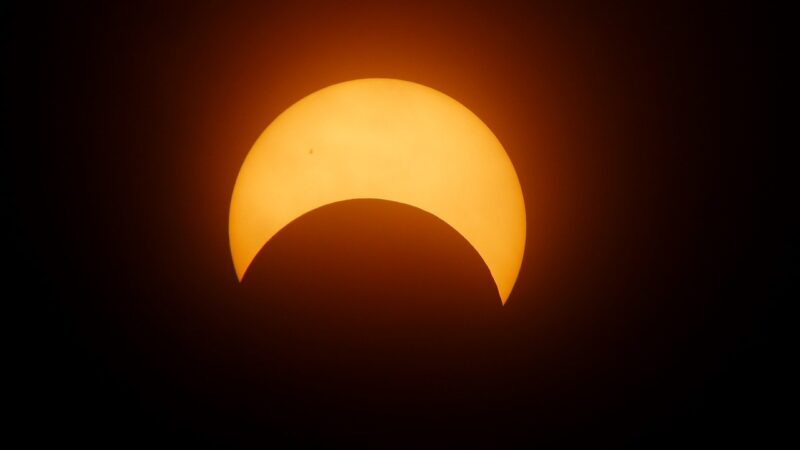The Impact of Solar Eclipses on Earth and How We Predict Their Occurrence
November 12, 2024

Solar eclipses are among the most awe-inspiring celestial events, captivating the imaginations of people worldwide for centuries. These phenomena occur when the moon passes between the Earth and the sun, casting a shadow on the Earth and temporarily blocking the sun’s light. While the visual spectacle of a solar eclipse can be stunning, the implications of these events extend far beyond mere aesthetics. From influencing scientific research to impacting cultures and traditions, solar eclipses leave lasting impressions on our planet.
1. Understanding Solar Eclipses
Solar eclipses are classified into three main types: total, partial, and annular. Each type presents different visual experiences and levels of solar obscuration:
- Total Solar Eclipse: This occurs when the moon completely covers the sun’s disk, creating a dramatic shadow that can plunge daytime into darkness for several minutes. It is a rare event that can only be observed from a specific path on Earth.
- Partial Solar Eclipse: In this case, only a portion of the sun is obscured by the moon. People outside the path of totality see a crescent-shaped sun rather than total darkness.
- Annular Solar Eclipse: This occurs when the moon is too far from the Earth to completely cover the sun, resulting in a “ring of fire” effect—an outer ring of sunlight visible around the moon.
The key component that determines whether an eclipse will be total, partial, or annular is the alignment of the Earth, moon, and sun, which must occur at precise angles and distances.
2. The Science Behind Solar Eclipses
The scientific significance of solar eclipses is profound. Historically, solar eclipses have contributed to advancements in fields like astronomy, physics, and even understanding the sun itself. Key elements include:
- Testing Einstein’s Theory of General Relativity: One of the most famous solar eclipses occurred on May 29, 1919. During this event, Sir Arthur Eddington led an expedition to observe the position of stars near the sun. The results supported Einstein’s theory, showing that light bends in the presence of massive objects, fundamentally altering our understanding of gravity and space.
- Studying the Solar Corona: The corona is the outer atmosphere of the sun, visible only during a total solar eclipse. These events allow scientists to study its composition and behavior, which has implications for space weather and our understanding of the sun’s influence on the solar system.
- Impact on Animal Behavior: Animals exhibit unique behaviors during solar eclipses. Birds may stop chirping, and nocturnal creatures often become more active, providing an interesting area of study for biologists and ecologists.
Understanding these impacts helps researchers continuously improve their knowledge of celestial mechanics and the interactions between celestial bodies.
3. Cultural and Historical Significance of Solar Eclipses
Throughout history, solar eclipses have shaped cultures and inspired myths and legends across the world. Many civilizations interpreted eclipses as omens or messages from the gods. Here are a few instances:
- Ancient Civilizations: For many early societies, solar eclipses were frightening events. The Babylonians, Chinese, and Greeks all created myths surrounding these phenomena, often associating them with chaos or divine judgment.
- Predictions and Knowledge: Various cultures developed ways to predict solar eclipses. The ancient Maya had an advanced understanding of astronomy that allowed them to predict eclipses with incredible accuracy, demonstrating their sophisticated mathematical skills.
- Modern-Day Celebrations: Today, many communities celebrate solar eclipses with festivals, viewing parties, and educational events. The unifying nature of these occurrences brings people together, fostering camaraderie and mutual wonder.
The blend of science and culture highlights the multifaceted impact of solar eclipses on human history and psyche.
4. How Do We Predict Solar Eclipses?
Predicting solar eclipses involves complex astronomical calculations and a deep understanding of celestial mechanics. Here’s how scientists and astronomers approach eclipse predictions:
- Celestial Mechanics: The movements of the Earth and moon are governed by gravitational interactions. By applying mathematical models and Kepler’s laws of planetary motion, astronomers can determine when and where eclipses will occur.
- Saros Cycle: This is an 18-year cycle that can be used to predict eclipses. Eclipses occurring in this cycle share similar geometries and can be calculated well in advance.
- Modern Technology: Space-based telescopes and satellites provide real-time data about the movements and positions of celestial bodies, improving the accuracy of predictions. Software and applications also allow for the easy visualization of upcoming eclipses, making them accessible to the public.
The combination of historical knowledge and modern technology enables accurate predictions far into the future, allowing science enthusiasts and casual observers to prepare for these spectacular events.
5. The Future of Solar Eclipses
As we advance into the future, solar eclipses will continue to captivate audiences worldwide. Several upcoming solar eclipses are highly anticipated, providing opportunities for scientific research and public engagement:
- 2024 Total Solar Eclipse: This event is expected to be visible across a large swath of North America. With millions expected to witness the phenomenon, it will likely lead to increased interest in astronomy and education initiatives.
- Renewed Interest in Solar Studies: As we confront climate change and solar phenomena, understanding the sun’s behavior becomes critical. Eclipses provide a unique opportunity for researchers to gather data that can further inform our understanding of solar activity and its effects on Earth’s environment.
The ongoing fascination with solar eclipses will ensure that they remain an important subject in both scientific inquiry and cultural reflection.
Conclusion
In conclusion, solar eclipses are more than just astronomical events; they symbolize humanity’s quest for knowledge and understanding of the universe. From their historical significance to their impact on modern science and culture, eclipses provide a rich tapestry of exploration that transcends generations. As we continue to study and predict these events, we deepen our appreciation for the celestial dance that shapes our planet and inspires our imaginations.
Next time a solar eclipse approaches, whether through scientific interest, historical appreciation, or sheer wonder, remember that each eclipse carries with it a story—one of science, culture, and our relationship with the cosmos.







